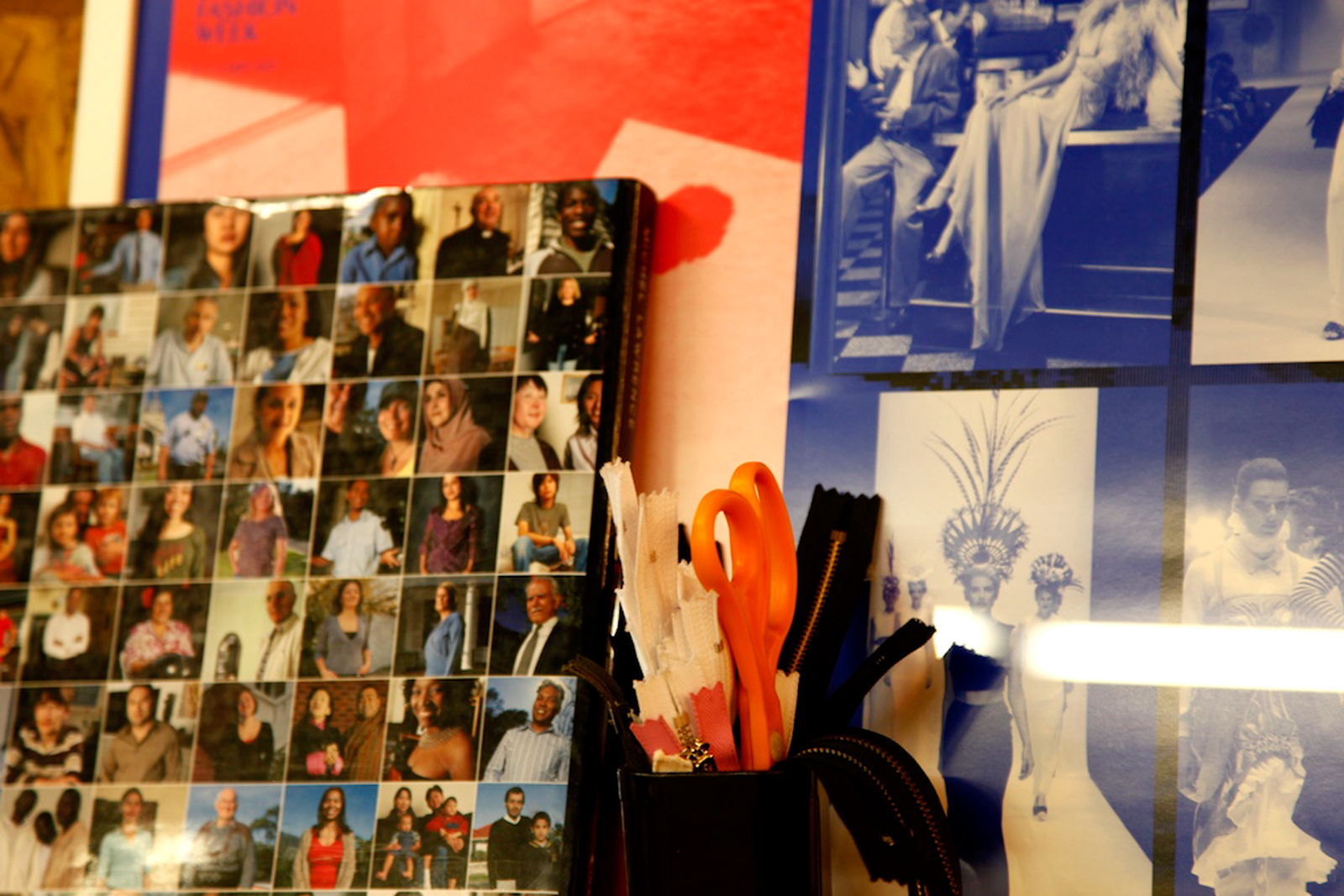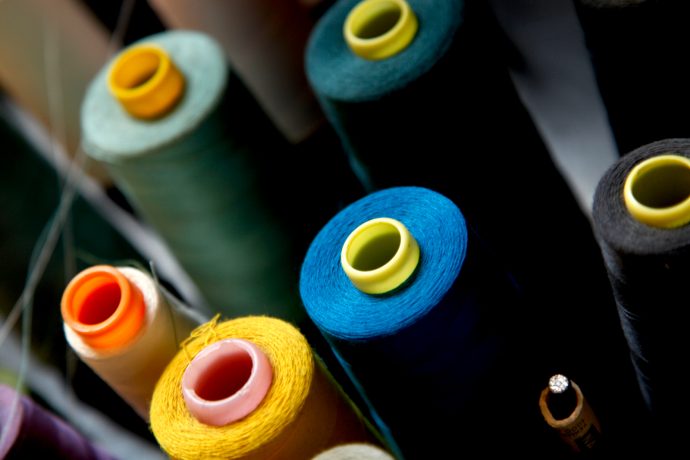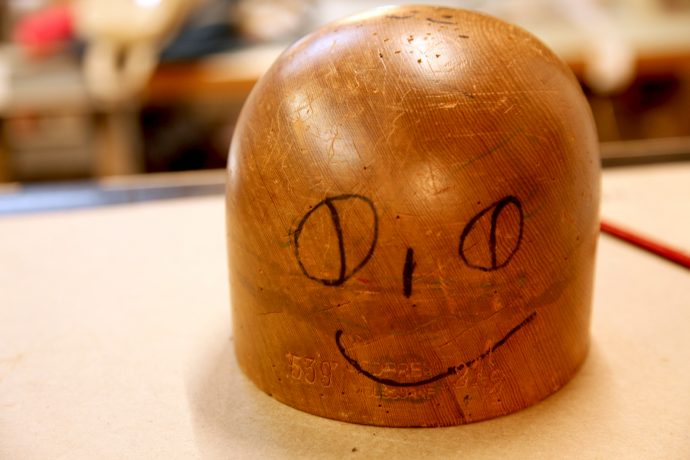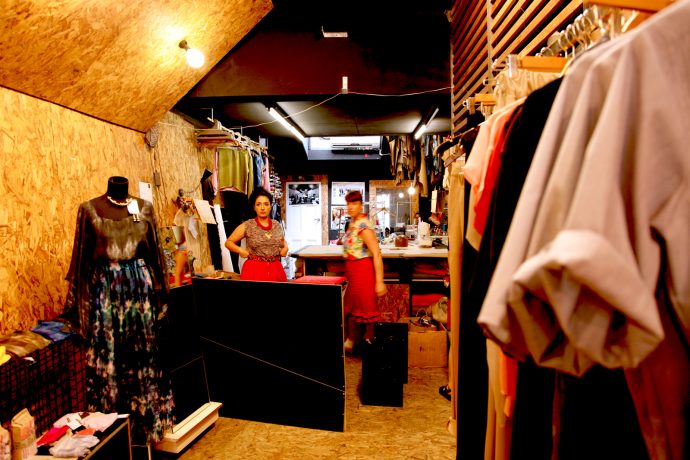Curiosity and the social creature

From former queen of the airwaves Oprah Winfrey to diminutive doyenne Lee Lin Chin and the king of Australiana design himself, Mr Ken Done, the Social Studio has garnered itself some big time enthusiasm. Founded in 2009, The Social Studio (TSS) was born of a desire to create opportunity rather than charity, using a particular blend of accessible or ‘remixed design’, industrial elbow grease and collective vision. Far from laurel-resting, TSS has worked with local and international designers and artists (including US architect and artist Adam Kalkin, Brunswick-based Breathe Architecture and partnerships with RMIT University) to devise pedal-powered pop up shops as part of the State of Design Festival, runway shows at the L’Oreal Melbourne Fashion Festival and the Quick Unpick series of talks with prominent local fashion designers (including Melburnians TV and Alice Edgeley). TSS continues to innovate and late 2012 will see a fresh retail re-design of the Collingwood shop (taking it even further away from its raver past) by our own Assemble team.
We spoke to Grace McQuilten (Founder and CEO) around a big communal table, next door at the Cutting Table café. We were interrupted regularly by the delivery of flowers and smooches from staff and friends bestowed on a bashful Grace – our meeting took place on her (not so secret) birthday.

“I grew up in a tiny town in central Vic called Maldon. Both of my parents were idealistic, socialist hippies. The early part of my life was quite idyllic. Running around like a wild child. Spending a lot of time adventuring without anyone else around. From a really young age I was really influenced by [my dad’s] idealism. Particularly about war, peace and the environment. He’d been conscripted for the Vietnam War. He and my mum’s brother were the first people to go to court as conscientious objectors and to win the case. That had really influenced him in his politics. I remember as a kid having arguments with other kids about peace and war and stuff like that. Meanwhile, my mum was a teacher. She was the breadwinner and sort of kept everything going. She was also a painter. So from a young age, I had those two influences.”
Moving to Melbourne as a teenager, Grace struggled to find her niche. Feeling like the misanthrope (everyone else seemed focused on hormones and social hierarchies), Grace came close to ditching school. Luckily, she enrolled in Footscray City and found a degree of liberty and independence, exposure to peers and friends from diverse backgrounds and the encouragement to pursue a rigorous but unconventional path.
“As a creative person I get bored if I’m just doing one thing. I try to be as focused as I can with my time. I won’t take on a project unless I know I can deliver it. Sometimes that means I’m a little bit of a workaholic, but I’m pretty passionate and I like to do everything with as much integrity and intensity as I can.”
At the University of Melbourne while studying Creative Arts, Grace moonlit as an industrial relations research assistant, up-skilling informally, teaching herself contract law and “all that business and entrepreneurial stuff.” Also sharpening the right side of her brain, she did internships in New York with the New Museum and the Dia Art Foundation. “The Dia one was awesome – I was working at [artist] Dan Flavin’s archive helping prepare his catalogue. Meticulous, detailed work. Again, it’s that integrity and intensity.”
The genesis (not in a Phil Collins way) of The Social Studio came while Grace volunteered at non-profit restaurant Lentil as Anything, “which for all of its madness, was pretty radical in the sense that it operates completely outside of the normal conventions of…. business.” When she arrived there was no business plan, no financial books, just a donations box. “People put in whatever they wanted for their own meal. And somehow, through alchemy, that box translated into this functioning place where people came and supplies were bought.” Grace never intended on getting involved in the management of Lentil, but ended up balancing books and fiery kitchen dynamics for three years. “I liked the fact it was so irreverent and was prepared to take risks and break the rules.”

Her curiosity about how to adapt this freewheeling model into a more “mainstream kind of business” led her to think laterally about how capitalism could be used for good. Grace saw the opportunity for a community space that connected diverse people while also welcoming passers by and curious folk from the general public. “Unless you share your ideas with a wide audience, you’re only ever preaching to the converted. Being a creative person I’ve always thought that art and design is an incredible way to communicate without words, without a particular political message or ideology.”

Although her background is in art history and activism, a fashion label seemed like a logical step. Grace kept meeting fashionable, “sassy and smart” people who she knew would benefit and thrive if given the opportunity to design and run their own label. “I didn’t set it up because I wanted to help anyone. It’s not about charity at all. I recognised that there was talent. And, as an Australian I felt really ashamed at the barriers that a lot of migrants face in accessing fair employment and education. I witnessed first hand incredible racism and difficulties fitting into mainstream schools and jobs and I felt it was something I couldn’t walk away from. I think that we can all benefit from others…and from cultures that have been going for thousands of years. We’ve got a lot to learn!” Around 85 per cent of students and staff at TSS have experienced being a refugee before arriving in Australia. Grace is cautious about the term “refugee”, insisting that it should not be seen as a permanent label, rather as an experience that people have been through “that they’re moving on and away from.”


In reaching out to the local design community, Grace set out early on to create a dialogue and exchange between emerging and established design. The ‘Quick Unpick’ series of talks featured local designers such as Nancy Bird, Obus and Munk. “Our students have been really lucky – most fashion students would only dream of those opportunities.” And, with various partnerships and accreditation via RMIT School of Fashion, AMES and William Angliss, students leave with bright employment prospects. Industry mentors/board members have included Tamara Veltre of Ruby Patootie and Lulamae, Georgie Cleary of Alpha60 and Ingrid Verner from TV.

In 2011, Grace received a random call from a fashion lover named Jackie Ruddock. Over the phone, Ruddock enthused that she was about to turn 30 and was planning to do a project in which she would wear an item of Ken Done clothing everyday for a year to raise money for charity, ‘to show people that you don’t have to be rich to be a philanthropist.’ For Ruddock, TSS was the perfect beneficiary of her goodwill, because they were in the business of fashion and that she ‘LOVED fashion!’ Grace remembers that “it was always about Ken. He totally got on board too, but it took awhile. [Jackie] was probably doing the project and blogging about it for about 6 months before she met him and then they became great friends and he even body painted her!”. Ruddock eventually raised over $20,000 for TSS through What Ken Be Done. Also included in the bargain, a new generation of Australians were introduced to Ken Done, the ultimate Aussie kitsch icon.

On her inspirations in life, Grace says that it is “artists, without a doubt.” Nature, patterns, repetitions and the tension between order and chaos are also touchstones. “Any kind of paradox or complexity. Anything that seems really impossible or really hard. Like the fact that people love fashion and it’s a way of expressing themselves but at the same time there’s so much waste involved in producing it and most people don’t want that waste, but they still love it – that’s an interesting paradox. It’s never easy but I would rather we cause problems that make people think… That’s one of the problems with the way our society works – it tries to eliminate tensions and complexities when in fact that’s how we make breakthroughs and change in positive ways. So yes, I like problems!”


When pressed for her definition on what makes a great space, it is warmth and a sense of welcome. “As humans we’re inherently social creatures – we want to feel included and connected. I quite like flaws; imperfections. Things that remind us that they’ve been made and how they’ve been made. I like to see things for what they are.”

Photos by Eugenia Lim